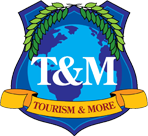Applying Statistics to Tourism
September 2016
There are few people who can say that they enjoyed their college statistics course. Most of us tended to see statistics courses as an exercise in making simple hard and the obvious obtuse. Yet despite the many difficulties modern statistics can play an important role in the tourism industry. For example, anyone interested in promoting his or her locale’s tourist industry needs to have at the very least a good demographic profile of the visitors to his city. Tourism professionals seem to love to quote statistics be these statistics correct or not. Although often these stats are quoted of scientific proof, in reality statistics are both an art and a science. We can use statistics as a means to clarify and organize data or a means to create a numerical form of double-speak. When we use statistics properly. It can be a wonderful tool in discovering hidden problems within his/her industry, and trends that may cause future problems. When used improperly statistics can become the basis for incorrect decisions and even bankruptcies.
To promote a location, tourism professionals need to have at their disposal an accurate picture of their visitor population. This profile should include, descriptive statistics on visitor ages, on types of activities in which visitors participate, lengths of stay, and amounts of money spent per party. Most people assume that such “simple” statistics are easy to obtain. In reality they are not. Data must be collected through some measurement instrument, usually a questionnaire. Despite the popular misconception that questionnaires are easy to write, like the field of statistics itself, questionnaire writing is an art with a whole host of internal pitfalls to avoid. This month Tourism Tidbits offers a guide to using gathering and using statistics properly.
- Consult a trained statistician before making a statistical judgment. Anyone who has had a basic course in Statistics can call him/herself a statistician. With today’s many computer statistical programs it is not hard to get an answer. Unfortunately without proper training the answer may not fit the problem. Only a person properly trained in the art of statistics can determine if the right technique is being used for your research problem.
- Be careful of how you interpret your data. Tourists are especially hard to pin down. They may often answer questions in a haphazard manner, or even give wrong information. Combine your quantitative analysis with some form of qualitative analysis as a check on the accuracy of your data.
- Combine your data with a social model. Statistics can be a wonderful tool. However statistics that are not interpreted and connected to some social model are often nothing more than meaningless numbers. Collect the data you need to answer the questions you have.
- Know what it is you are measuring. when checking the responses to a survey at a hotel remember these responses reflect only the opinions of those who are Hotel guests. The responses of other tourists may be different
- Have an expert statistician examine the questionnaire before it is distributed. A questionnaire written in such a way that the data cannot be either tabulated or analyzed will be nothing more than a costly exercise in frustration. It is a lot easier to fix a questionnaire before distribution than after the data are already collected.
- Select the style of questionnaire that best suits your needs. Information may be gathered in person, by telephone, or through the mail. Each style of information gathering has its own pluses and minuses. Beware of hidden costs that make what appears to be the least expensive option in reality the most costly. A trained statistician can help you decide which style best fits your needs.
- Test your questionnaire prior to distribution. Make your questionnaire say what you mean, not what you assume you mean. If people misinterpret what you are saying you have collected a lot of worthless data. This misinformation is not only useless it is harmful, as decisions based on false information can prove to be costly. In order to avoid such pitfalls, run a pre-test to see if ambiguities have crept into to your questionnaire.
- Design your questionnaire carefully and in a professional manner. A good questionnaire must be developed in such a manner that each question means the same thing to each and every person who responds to it. When writing a questionnaire avoid the use of vague terms, or words filled with double-entendres. Ask only questions that correspond directly to your tourist industry’s goals.
- Fight the urge to ask unrelated questions. A questionnaire’s length does matter! Most tourists on vacation do not want to be bothered with filling in a questionnaire. If you are too ambitious and ask too many questions you will be rewarded with a questionnaire that goes unanswered. One of the biggest mistakes is when nations have their incoming passengers fill out questions that ask meaningless question written on unreadable forms. If the visitor cannot read the form because the print is too small then the answers given will often be invalid.
- Get the cooperation of the people who are going to distribute the questionnaire before you develop it. A non-distributed questionnaire is nothing more than a very expensive academic exercise! Bring the idea of a questionnaire before the next meeting of your hotel and restaurant association or Chamber of Commerce. Take a straw poll to see if people will cooperate in its distribution before spending the money to develop the questionnaire.
- Develop a reward system that encourages the desire to respond. The further someone is in both place and time from his vacation spot the less likely he is to fill out the questionnaire, and the less accurate the given information will be. Some form of a reward system, such as a coupon for a discount at a local establishment may be the incentive needed to increase the response rate as well as the usefulness of your data.



